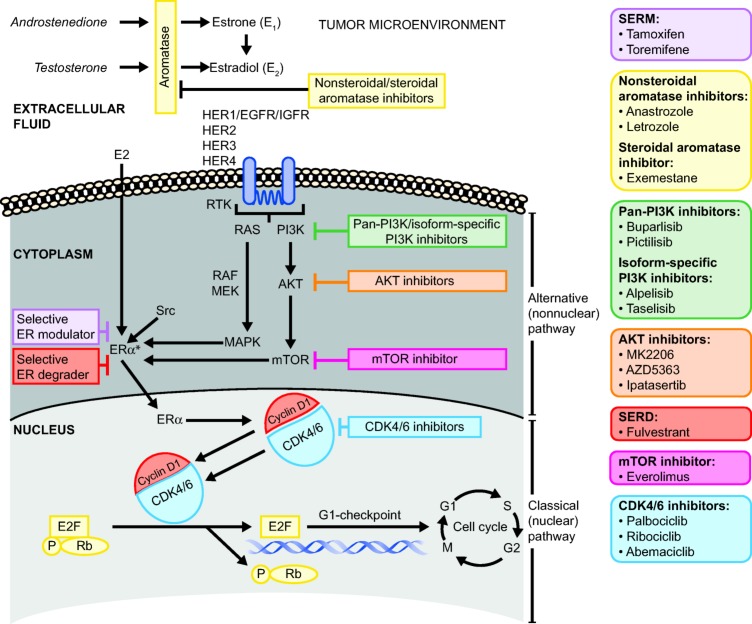Figure 1.
Critical nuclear (classical) and nonnuclear (alternative) signaling pathways implicated in endocrine resistance and targets for drugs in development. Note: Upon ligand binding, the estrogen‐ER complex dimerizes and interacts with coregulator proteins and specific sequences of DNA and the estrogen response elements to promote the transcription of a wide range of genes that participate in the regulation of the cell cycle, DNA replication, cellular differentiation, apoptosis, and angiogenesis.
Abbreviations: AKT, akt murine thymoma viral oncogene; CDK4/6, cyclin‐dependent kinase 4/6; E2, estradiol; E2F, E2F transcription factors; EGFR, epidermal growth factor receptor; ER, estrogen receptor; ERα, estrogen receptor‐α; HER1, human epidermal growth receptor 1; HER2, human epidermal growth receptor 2; HER3, human epidermal growth receptor 3; HER4, human epidermal growth receptor 4; IGFR, insulin‐like growth factor receptor; MAPK, mitogen‐activated protein kinase; MEK, mitogen‐activated ERK‐activating kinase; mTOR, mammalian target of rapamycin; P, phosphate; PI3K, phosphoinositide‐3‐kinase; RAF, rapidly accelerated fibrosarcoma; RAS, rat sarcoma; Rb, retinoblastoma protein; RTK, receptor tyrosine kinase; SERD, selective estrogen receptor downregulator; SERM, selective estrogen receptor modulator.
*Upon ligand binding, the estrogen‐ER complex dimerizes and interacts with coregulator proteins and specific sequences of DNA and the estrogen response elements (EREs) to promote the transcription of a wide range of genes that participate in the regulation of the cell cycle, DNA replication, cellular differentiation, apoptosis, and angiogenesis.

